| Early Spring Date: | April 30 |
| Late Spring Date: | June 1 |
| Best Dates to See in Spring: | May 10-27 |
Spring: Canada Warblers usually show up in the middle of spring migration. Some dribble in during early May, but your best chance to see one is during the third week in May. They mostly breed in Canada and the northern states, and some breed in the Appalachian Mountains. They are regular visitors to Monticello Park, but seeing one can require searching.
Fall: About 20 Canada Warblers pass through Monticello each fall. The most likely time to see one is during the last week in August and the first week in September.
Where to See Them in the Park
Canada Warblers usually forage low. They sometimes go into the stream, but they do it less than a lot of other species of warblers.
Physical Description
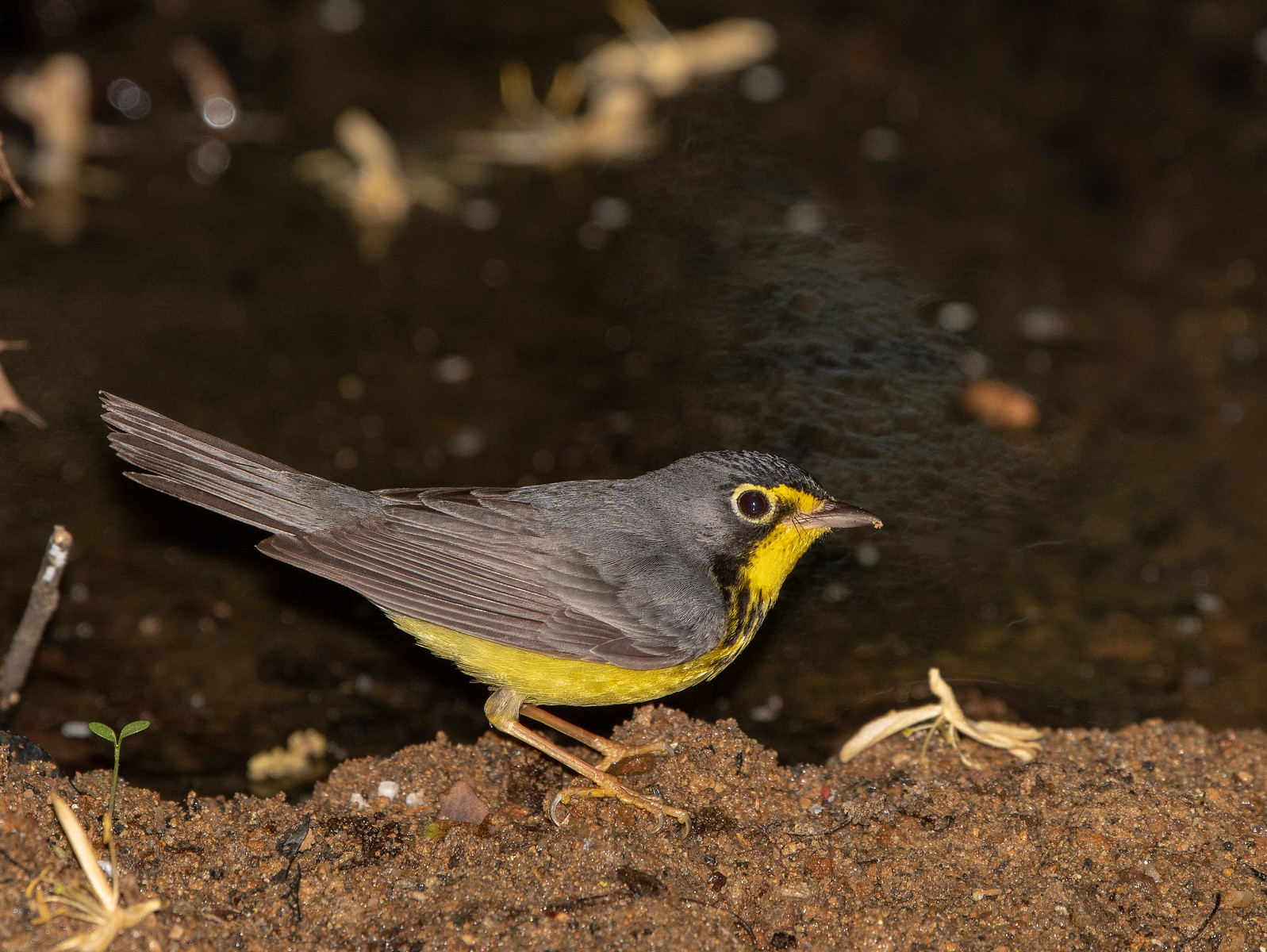
Canada Warblers are bluish-gray on the back with no wingbars or markings. The plain back is a key fieldmark. The underparts are mostly yellow, and the undertail is white. They have long pink legs.
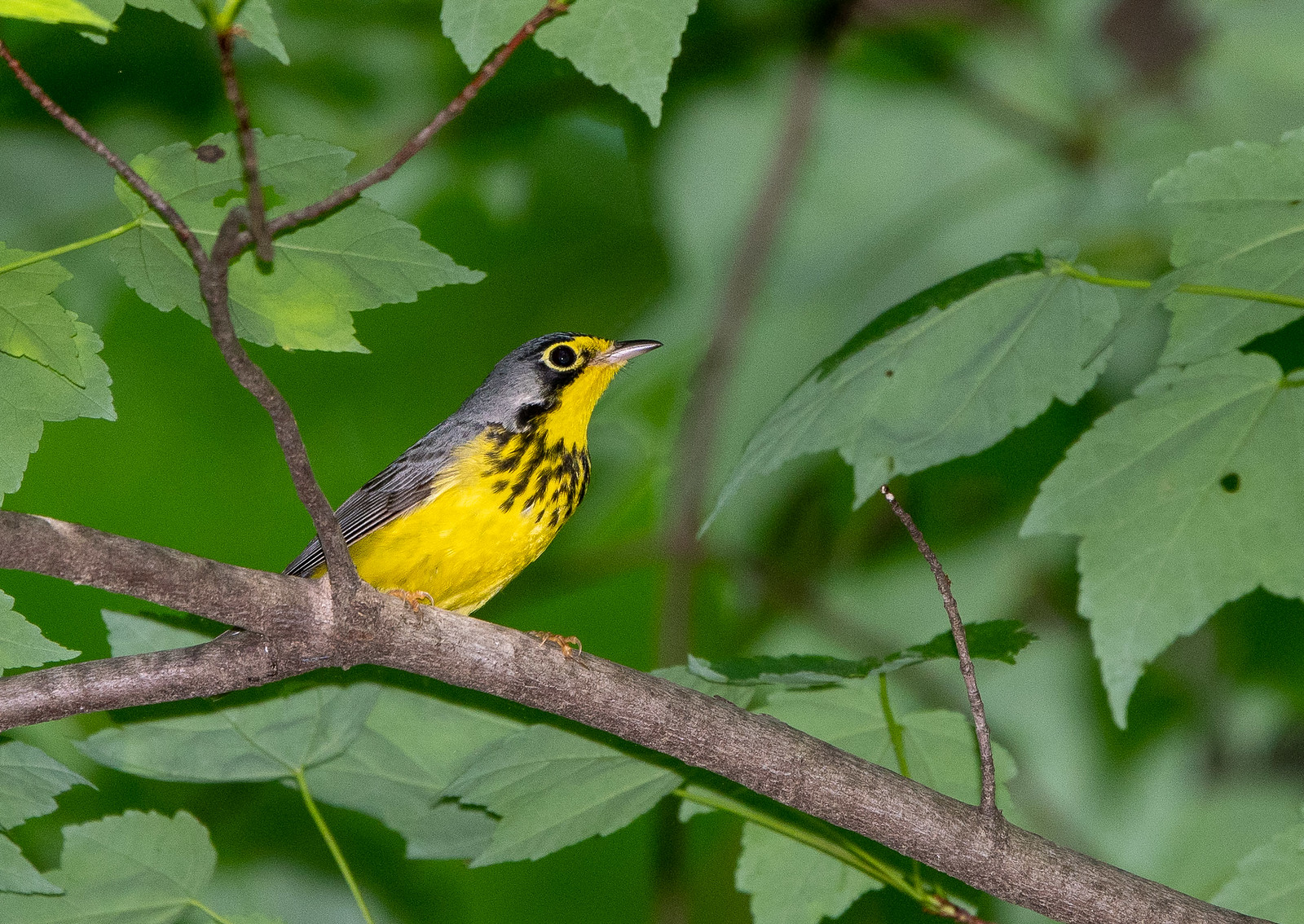
The most distinctive fieldmark on the male is the puka shell necklace. Some males have heavier necklaces than others. The black marks do not extend to the flanks as on a Magnolia Warbler, who also has a dark necklace. The Canada has yellow feathers between the bill and the eye. Also note the big eyering, which is another key fieldmark. It is part yellow and part white, although you are more likely to see the eyering than to see that it is two-colored. Coming down from the eye is a thick black line that looks like runny mascara. Another species who has the Rocky Horror mascara is the Kentucky Warbler, but it is not often seen at Monticello. The Kentucky is yellow below but does not have a necklace.
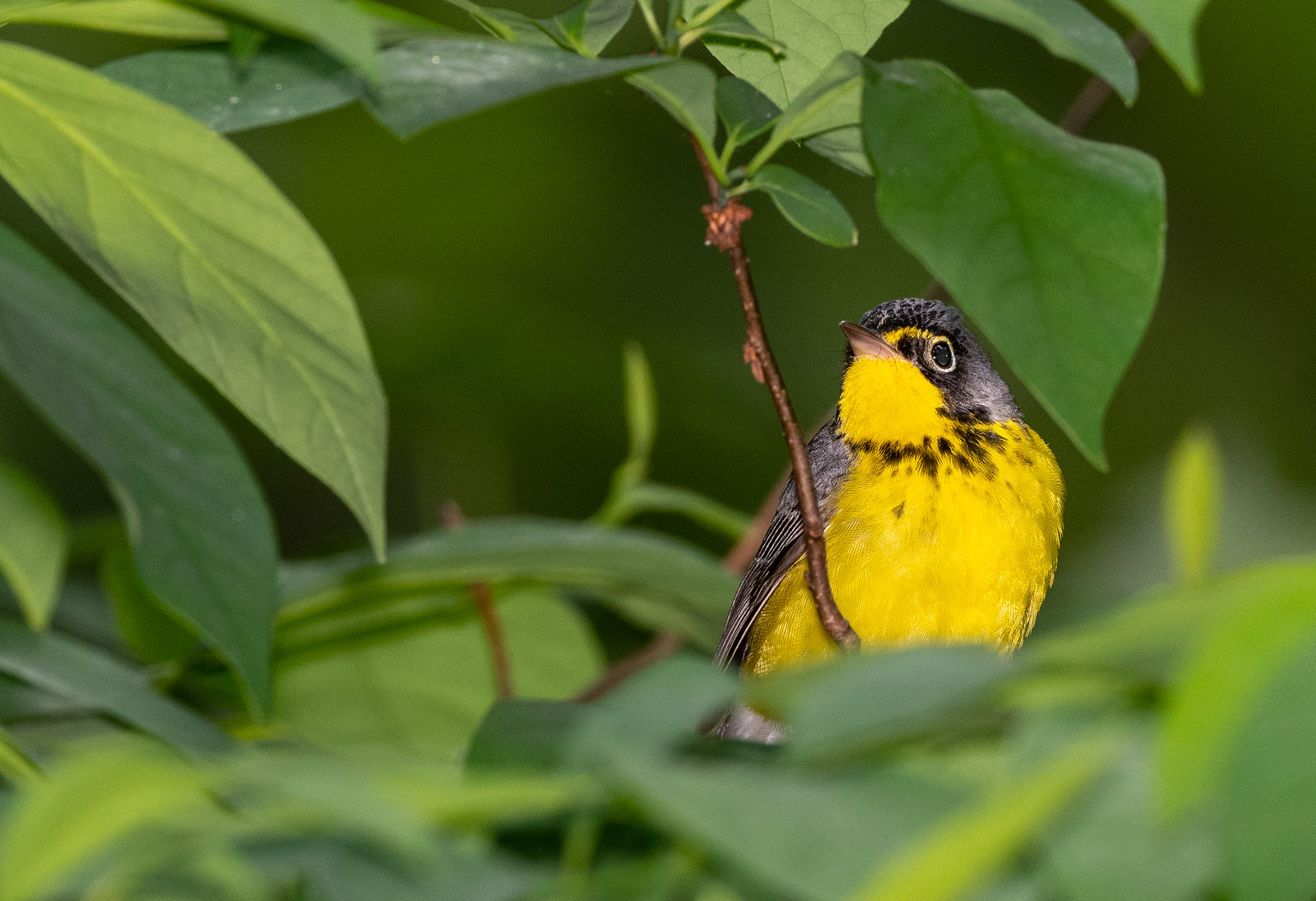
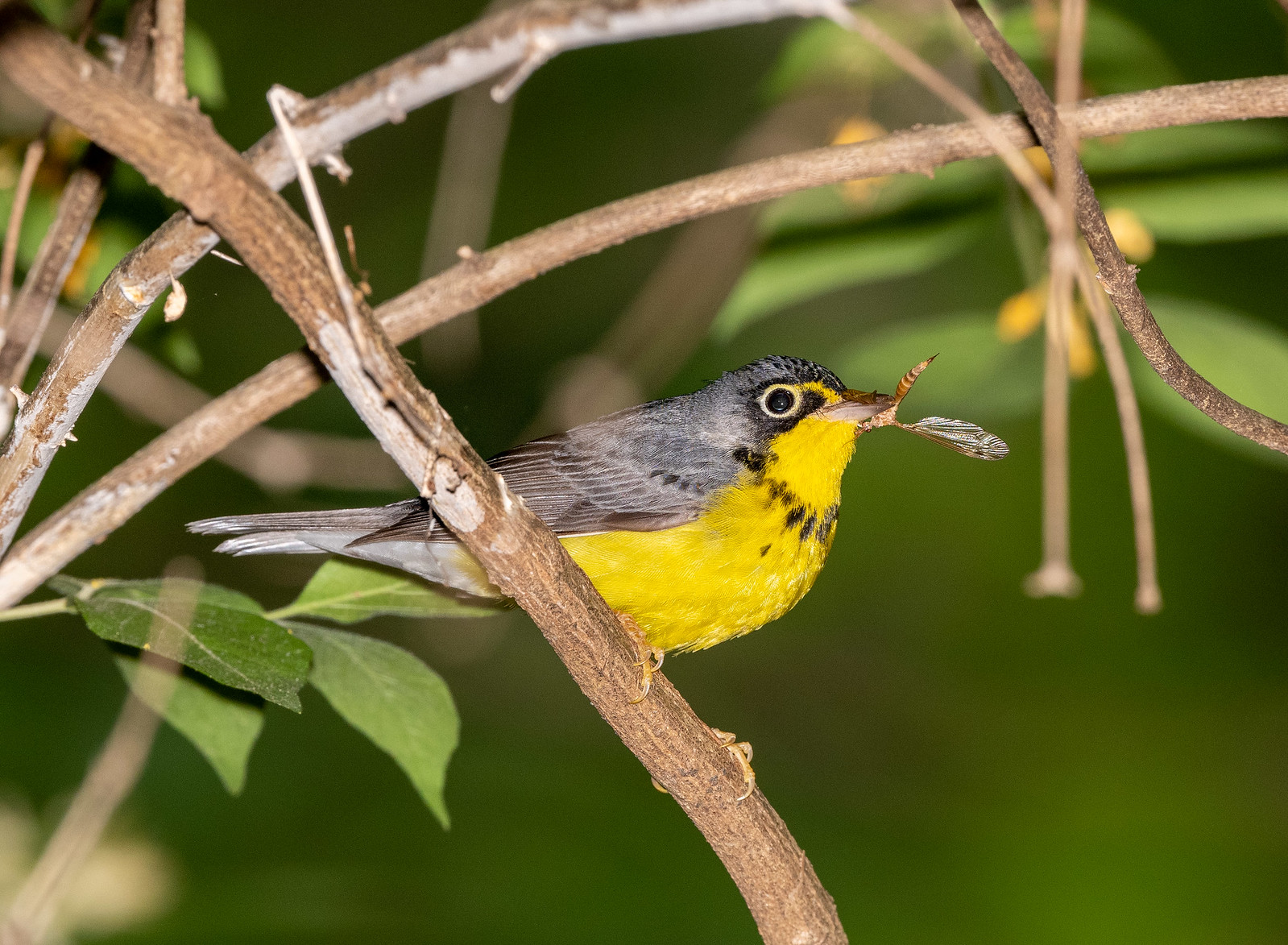
Canada females have a faint necklace. The plain back (with no wingbars) and the big eyering are key fieldmarks. You are more likely to see females during the latter part of spring migration.
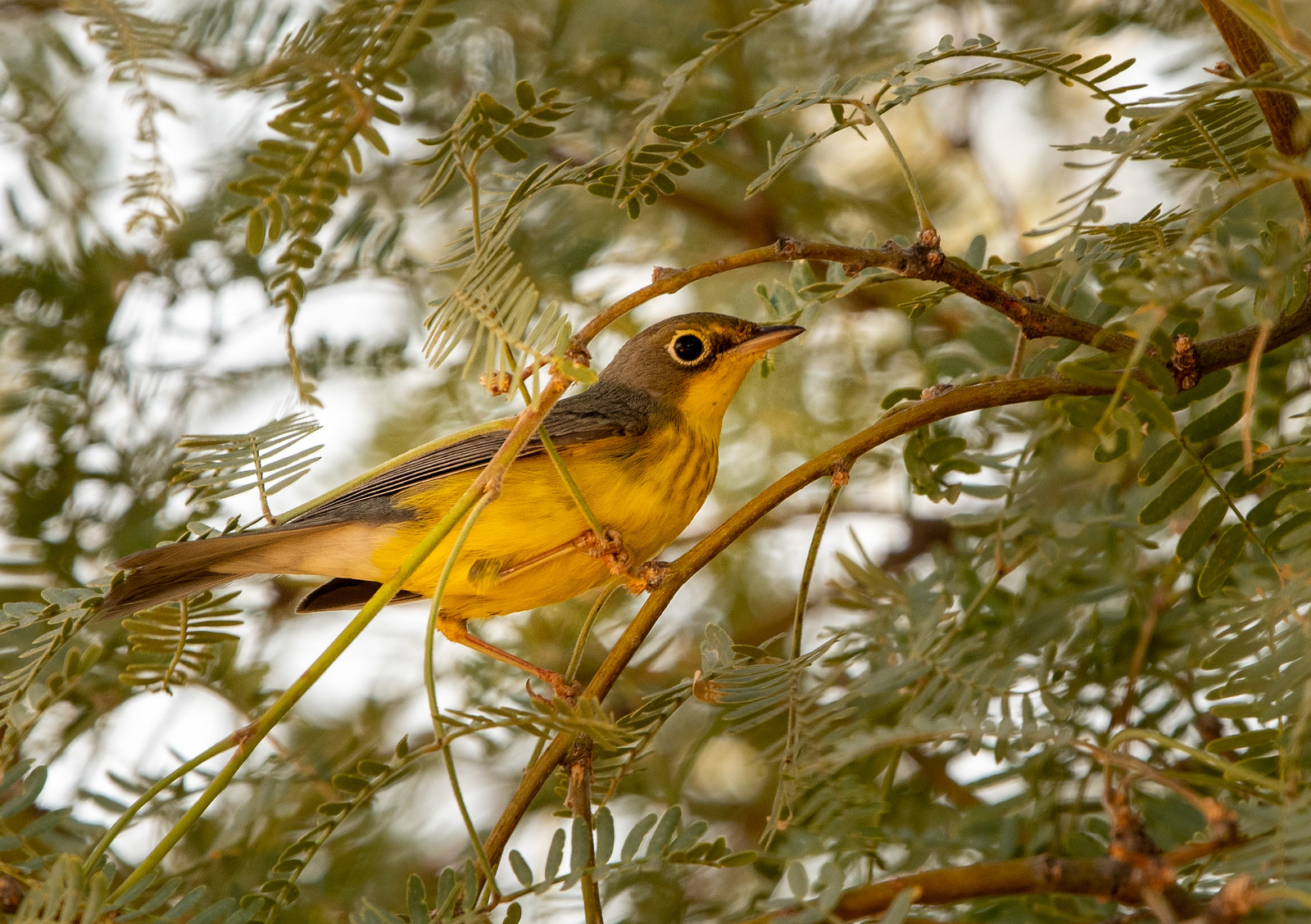
Fall: Fall plumage for adults is similar to spring plumage, but tends to be a bit grayer. The upperparts of first-year birds tend to be more olive, and the necklace is fainter. Fall first-year males and fall adult females look very much alike. Fall first-year females can be very dull and show little or no necklace.
Vocalizations
The song of the Canada Warbler is loud and sputtery — fie dippety, swee ditchety.
Hear the song of the Canada Warbler.
Notes
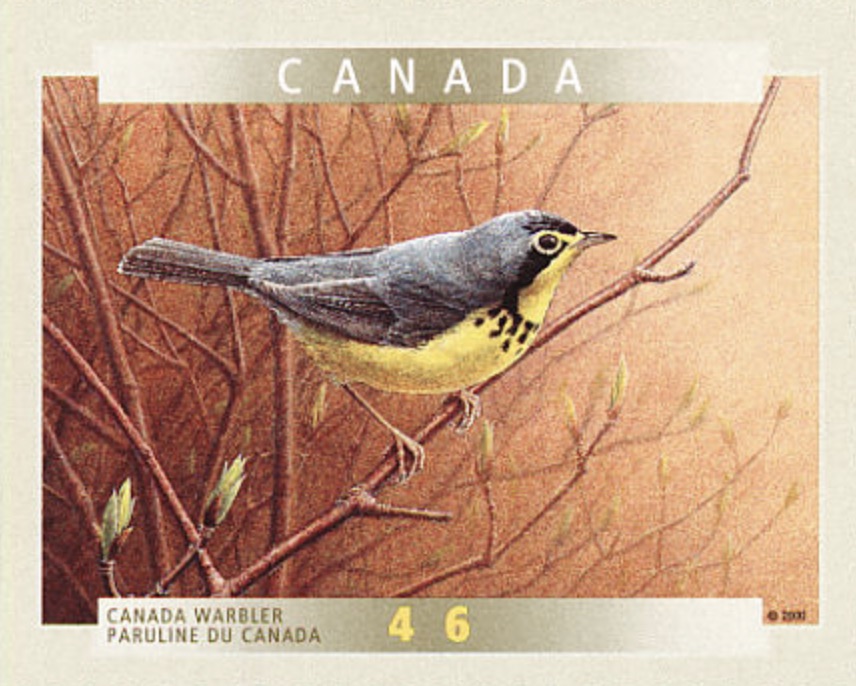
In 2000, the Canada Warbler was featured on a Canadian postage stamp. Warblers are in a family called the Parulidae. The chickadees and titmice are in a family called the Paridae, with parus meaning tit. Parulidae is a diminutive of Paridae and means that the family contains small, tit-like birds. The French word for warbler is paruline, and the French name for the Canada warbler is Paruline du Canada.
Origin of Names
Common Names: Canada from the fact that many breed in Canada. The New World Warblers were named for their similar appearance to European warblers, to whom they are not related. Most of the New World warblers do not warble (sing continuously with notes that change frequently).
Genus Name: Cardellina from the Italian diminutive of Cardella, which means goldfinch.
Species Name: Canadensis means from Canada.
Canada Warbler video footage
Return to the Index
